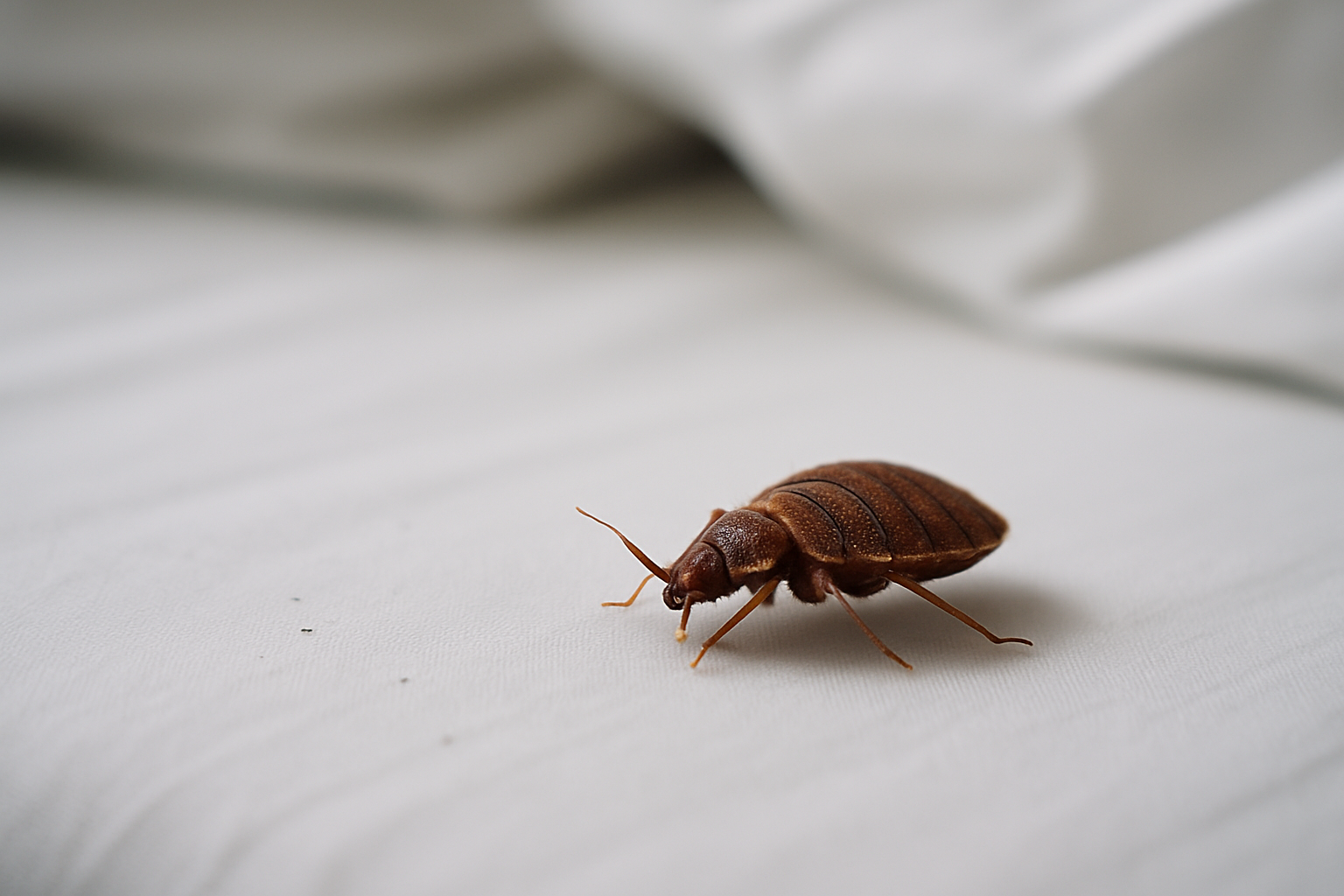Why recognizing bed bug bites is so important
Bed bugs are nocturnal parasites that feed on human blood.
An infestation often remains unnoticed for a long time because bed bugs hide during the day in cracks, seams, and furniture.
Only their bite marks on the skin provide clues to a possible problem.
The sooner a suspicion is recognized, the easier it is to contain an infestation – before the insects multiply heavily.
How to reliably identify bed bug bites
Bed bugs usually bite multiple times in quick succession to find the best blood source.
This creates typical bite patterns on the skin:
- Several small red dots in a row or cluster
- Mild swelling or redness around the bite
- Itching that can intensify over several hours or days
- Commonly affected: arms, shoulders, neck, back, legs
The bites themselves are painless because bed bugs release a mild anesthetic when biting.
The itching only occurs after waking up or hours later.
Differences from mosquito or flea bites
Since many skin reactions look similar, a bedbug infestation is often mistaken for mosquitoes or fleas.
These differences help with classification:
|
Feature |
Bedbug bite |
Mosquito bite |
Flea bite |
|
Number & pattern |
Multiple bites in a row or cluster ("bedbug trail") |
Single bites, scattered |
Mostly 2–3 bites next to each other |
|
Location on the body |
Often on areas uncovered at night |
Any body parts |
Mostly on legs or ankles |
|
Itching |
Severe, persistent itching over several days |
Short-term, often subsiding the same day |
Very strong, immediately noticeable |
|
Time |
At night, symptoms visible in the morning |
At any time of day |
If pets or carpets are infested |
If you notice multiple bites in a line or cluster in the morning, a bed bug suspicion is likely.

When you should act
A single bite is not yet a cause for concern – but with recurring skin reactions or regular traces on bedding (e.g., small blood spots or black dots), you should take action.
Important steps:
- Document suspicion (photos of bites, date, affected areas)
- Check bed and surroundings – especially mattress edges, seams, bed frames
- Use monitoring traps to gain certainty
- Professional assessment in case of confirmed infestation (e.g., thermal treatment or hot steam)
Detect bed bugs safely – without chemicals
For a reliable assessment of whether bed bugs are actually present, special monitor traps help.
You can buy the monitor traps in our shop 👉 Catchmaster Bed Bug Monitors .
These sticky traps are placed under or beside beds and reliably show whether bugs are present in the room.
They are chemical-free, discreet, and hygienic, ideal for care rooms or private bedrooms.
This way, an infestation can be confirmed or ruled out before larger measures become necessary.
Conclusion: Detect early, react calmly
Bed bug bites are unpleasant – but no reason to panic.
Those who know the typical signs can react quickly and prevent further spread.
With simple monitoring systems and targeted control, a suspicion can be confirmed or dismissed early – completely without chemicals.
This keeps the environment – whether a care facility or home – hygienically safe, calm, and pest-free.






